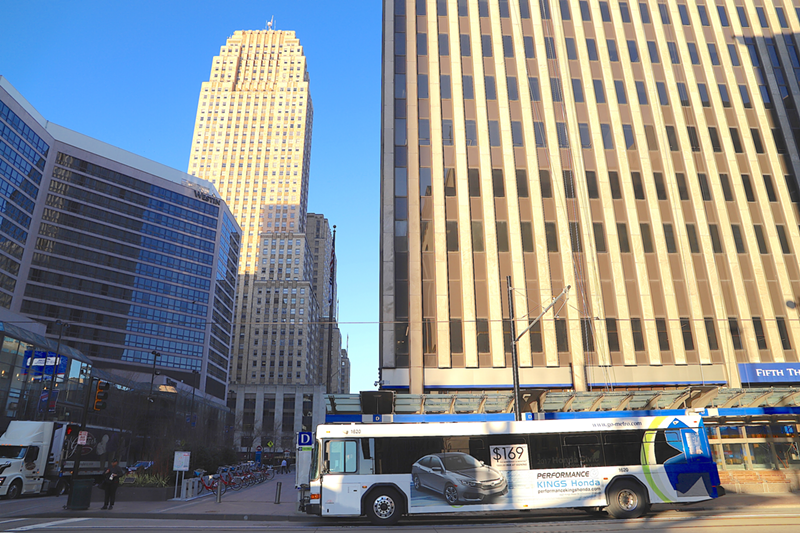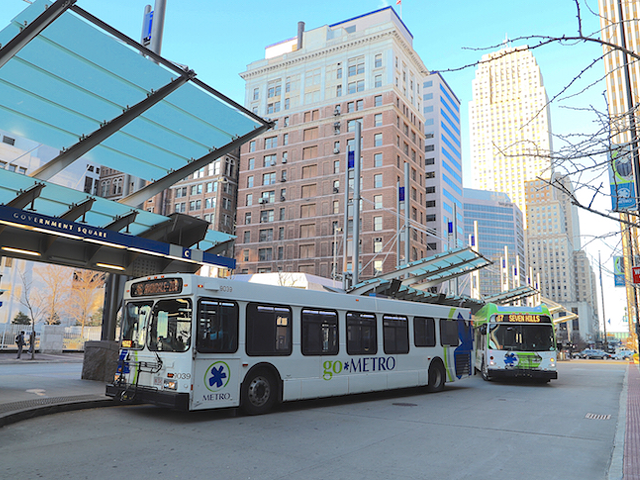A program aimed at speeding Greater Cincinnati's Metro bus system by eliminating under-utilized bus stops is expanding, officials say. But before it does, you can provide feedback about stops you use.
In March, Metro rolled out a pilot version of its FAStops program, which eliminated 115 stops on routes 15X, 17, 31, 33 and 41. The system has too many stops in some places, Metro says, which slows down bus service. You can see which stops were removed here.
Metro says the results of that pilot convinced officials to move forward with more stop removals.
"The positive results of the pilot included improvements in on-time performance and time savings that will allow Metro to adjust schedules in the future to speed up trip times," Metro said in a news release.
Now, Metro is looking to eliminate some stops on routes 1, 2X, 3X, 4, 6, 12X, 21, 27, 31, 32, 33, 38X, 40X, 43, 46, 49, 50, 64, 67, 71X, 72, 77X and 98 under the FAStops program.
Metro began the program in June 2018 with an evaluation of its more than 4,000 current bus stops. That evaluation included public input, but removal of stops in March this year did cause some questions and pushback from bus riders and transit activists. A few of the removals created distances of more than half a mile between stops.
"Each stop is assessed based on its location — ensuring stops aren’t too close together — as well as its usage, amenities, safety and accessibility," Metro said in the news release about the expansion of the program. According to the bus service, going from nine stops in a mile to six stops could save up to a minute of travel time.
Prior to removing any stops as Metro rolls out the next phase of FAStops on Aug. 18, the bus service will undertake another round of information sessions to gather feedback from bus riders. Those sessions will be:
• 5:30-7:30 p.m. July 15 at the Cincinnati Public Library Downtown (Tower Room) (Served by all downtown routes)
• 5:30-7:30 p.m. July 23 at the Community Action Agency (Served by Rt. 43 Reading-Lockland)
• 5:30-7:30 p.m. July 25 at the SORTA Board Room (602 Main St., 12th Floor) (Served by all downtown routes)
• 5:30-7:30 p.m. July 29 at the Norwood Community Center (Served by Rts. 4, 51, Metro*Plus)
• 6-8 p.m. Aug. 1 at the Blue Ash Recreation Center (Served by Rt. 4 Silverton-Blue Ash)
• 9:30-10:30 a.m. Aug. 6 at the Clovernook Center for the Blind and Visually Impaired (Served by Rt. 17)
• Date TBD at the Westwood Town Hall 5:30-7:30 p.m. (Served by Rt. 21)
Riders can also provide feedback by emailing Metro at [email protected] or by calling 513-621-4455.
Metro has taken some heat for the condition and location of its stops in the past. Last year, a Metro stop was named one of the worst in North America in an online contest. And Cincinnati's Better Bus Coalition, a group of transit activists, last year began a campaign to push Metro to provide benches at more of its stops. The group has been constructing and placing its own benches at stops without a place to sit for over a year. This spring, Metro announced it would be adding as many as 150 new benches at stops across its system. Those benches will be funded via advertising.
The bus service is working with a tight budget as it seeks to make improvements. The system has struggled with declining ridership, financial constraints and looming deficits, mostly because it is funded by slim state contributions and a rather unique City of Cincinnati earnings tax instead of a standard county-wide tax. SORTA's board last year opted against putting a Hamilton County sales tax levy on the ballot that would have shored up that deficit and funded an expansion of Metro, but could do so in 2020. In the meantime, transit activists have called for an increase in the city's earnings tax to better fund bus service.






